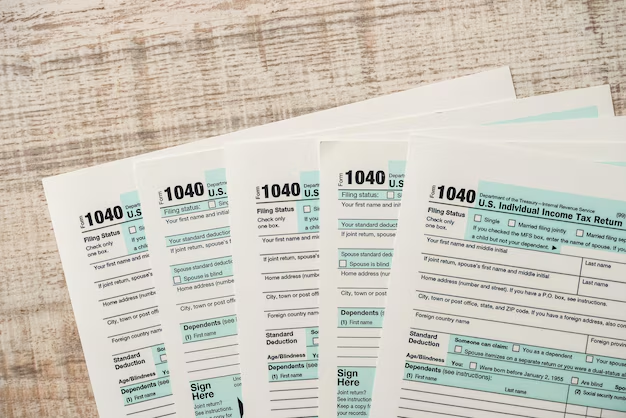Where Should You Send Your 1040 Tax Form?
Every tax season brings with it a whirlwind of paperwork and questions that can leave taxpayers feeling overwhelmed. Among the multitude of tasks: figuring out where to send your completed IRS Form 1040 can be particularly daunting. In this comprehensive guide, we’ll cut through the confusion and provide you with all the information you need to ensure your Form 1040 lands in the right hands. By addressing common questions and exploring related subtopics, you’ll gain the clarity needed to tackle this annual task with confidence.
🏠 Understanding the Purpose of Form 1040
Form 1040 is the standard federal income tax form used by U.S. taxpayers to report their income, calculate taxes owed, and determine whether a refund is due. The IRS has designed this form to accommodate various types of income, deductions, and tax credits. Many variations, such as the Form 1040-SR (for seniors) or Form 1040NR (for non-resident aliens), exist to meet specific taxpayer needs.
Why Proper Submission is Crucial
Ensuring that your Form 1040 reaches the correct IRS office is essential. Incorrect submissions can lead to delays in processing and refunds, potential penalties, or even legal actions if the oversight appears to be intentional.
🌍 Where to Send Your Form 1040
The destination for your completed Form 1040 largely depends on several factors, including where you live and whether you’re including a payment with your return.
Different Addresses by State
For taxpayers living in the United States, mailing addresses are determined by the state in which you reside and whether you owe money or are including a payment. Generally, when a payment is due, you will send your return to a designated payment-processing address. If you expect a refund or have no payment, a different address might be used.
For example:
- Without a Payment (Living in Alabama, Georgia, Kentucky, etc.):
- IRS, Kansas City, MO 64999-0002
- With a Payment:
- P.O. Box 931000, Louisville, KY 40293-1000
International Taxpayers
For U.S. citizens and residents living abroad, the address changes accordingly. Typically, forms without payments go to:
- Department of the Treasury, IRS, Austin, TX 73301-0002, USA
Electronic Filing: A More Convenient Option
For those who prefer a modern approach, e-filing is an excellent alternative. This method is often quicker, more efficient, and reduces the likelihood of errors. Additionally, taxpayers receive acknowledgments that their forms have been received and are being processed.
💡 Tips for Mailing Your Form 1040
- Double-check the Address: Always verify mailing addresses with the latest IRS guidelines or through a trusted tax professional.
- Ensuring Proper Postage: Returns sent without sufficient postage may be returned, slowing the process.
- Use a Secure Mail Service: Consider sending your forms via certified mail for added security and proof of delivery.
- Keep a Copy: Retain copies of all documents and associated forms for your records.
🔍 Paying Taxes or Expecting a Refund
Key Considerations for Sending Payments
When mailing a payment along with your Form 1040, it's critical to abide by guidelines to ensure prompt processing:
- Make the Check Payable to 'United States Treasury.'
- Include Your Information: Clearly write your name, address, taxpayer identification number, and the tax year/form number on your check.
- Attach Payment Voucher (Form 1040-V) to ensure seamless processing.
If Expecting a Refund
Taxpayers due a refund should ensure forms are complete and accurate. While refunds can be mailed with forms, opting for direct deposit is usually faster and more secure.
📋 Common 1040 Mistakes to Avoid
- Incorrect Social Security Numbers: Ensure all SSNs are correct and legible as errors can cause significant delays.
- Signature Omissions: An unsigned form is considered incomplete and will not be processed.
- Math Errors: Use caution when calculating figures as mistakes can affect tax liabilities or refunds.
- Incorrect Filing Status: Be sure to choose the correct status, as this affects the tax rate and available deductions.
🤔 Additional Questions and Considerations
What if You Miss the Deadline?
Failing to submit Form 1040 or pay taxes by the deadline can result in penalties. If missing the deadline seems likely, request an extension. However, remember this does not grant additional time to pay taxes owed.
Amended Returns
Form 1040X is utilized to amend a previously submitted return. When correcting errors or claiming additional credits or deductions, this form should be sent to a designated IRS address depending on your state.
📊 Summary: Key Steps for Sending Your 1040
Here's a quick overview to keep you on track:
- 📍 Check the Correct Address: Depends on state and whether payments are enclosed.
- 📧 Consider E-filing: Benefits include faster processing and confirmation of receipt.
- 📨 Use Secure Mailing Options: Certified mail adds a layer of security.
- 🔍 Review for Accuracy: Avoid common errors and include all necessary documentation.
🤝 Final Insights
Submitting your Form 1040 correctly is crucial to maintaining compliance with IRS regulations and ensuring you receive your refund on time. By understanding where to send your form and the options available, you can confidently navigate the tax-filing process. Remember, keeping informed and prepared helps mitigate stress each tax season, leading to a smoother, more manageable experience.
Addressing these considerations thoughtfully improves your efficiency as a taxpayer and contributes to the overall integrity of the tax system. Stay informed, prepare thoroughly, and approach tax season with the confidence of understanding the processes involved. 📬
